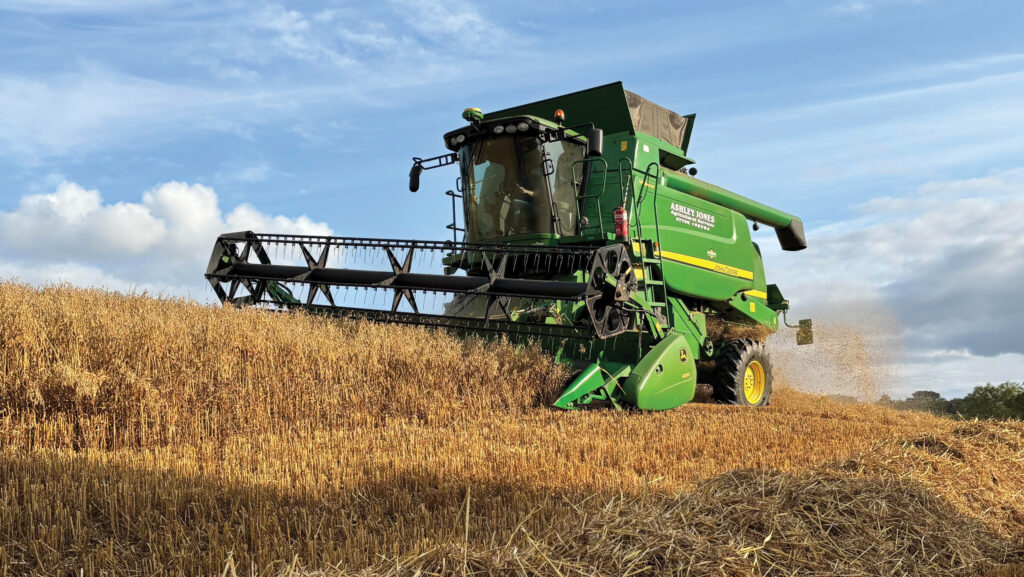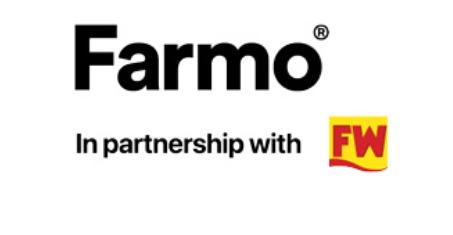Harvest 2025: Harvest slows as weather becomes more unsettled
 © Supplied by Ashley Jones
© Supplied by Ashley Jones Progress has been steady in some regions due to wet weather, while others are running ahead of schedule.
Grain quality appears to be holding up well, and growers remain cautiously optimistic as more crops begin to come in.
See also: An in-depth look at stem- and soil-borne diseases in cereals
Lincolnshire
Starting in Skegness, Union Grain has about 893t of oilseed rape and 1,400t of feed barley in store, according to company secretary Richard Hubbert.
“It’s been steady rather than busy, largely due to the unsettled weather.” Yields have been on the modest side, but quality is holding up.
“The barley is all feed grade, with an average specific weight of around 69kg/hl,” Richard says.
The store is expecting to get busier this week as winter wheat begins to arrive. “It all depends on how the weather holds.”
Hampshire
Further south, in Bishop’s Waltham, feed and milling wheat are now taking centre stage at Robin Appel, where traders are seeing a wide variability.
“On the whole, we have a massive variation in yield, but generally some quite good quality,” says wheat trader Edd Britton.
“The incredibly dry year with sporadic rainfall has affected crop performance, but it’s still early days.”
Specific weights are high, remaining mostly in the high 70s, and protein levels are surprisingly good.
“Some farms are experiencing remarkably high protein levels, with one instance reaching 15% protein, which is pretty unheard of,” adds Edd.
Somerset
The first bites of wheat are also being seen in store near Bridgwater, with better-than-expected results.
“At one point, I think farmers thought it was going to be catastrophic,” says John Collins, store manager at Cannington Grainstore.
Having received 7,500t of wheat so far, yield indications are between 7.4t/ha and 8.6t/ha.
“The yields aren’t fantastic, but they’re average.”
And milling wheat quality is looking good off the back of a prolonged spell of sunshine, with Palladium a standout variety.
“It needs to hit 250 on Hagberg, but we have been seeing 350-plus. And proteins have easily been 13.8-14%, which is really good.”
Oilseed rape has been faring well too, with yields averaging 4.4t/ha to 4.9t/ha.
“The average oil content is 44% this year,” he says. But barley intake is down by 60% to 1,500t.
“We still have a little bit of spring barley to come, but I think farmers struggled to get winter barley in the ground.”
However, the lack of ergot has been positive, with very little around this year.
Cornwall
Further west, at Smeaton Farm near Saltash, Ashley Jones, who farms in partnership with his parents, is feeling upbeat about this year’s harvest.
The family farm is currently growing winter oats, winter wheat, winter barley, spring beans, and spring barley. “Things are going really well,” says Ashley.
“I don’t want to rub salt in the wound, but the Cornish weather has been very good to us so far this year.”
This week, the focus is on harvesting winter oats, across around 59ha of Mascani, which have produced a specific weight of 56kg/hl.
Despite a few scattered showers, moisture levels are at 14%. He is aiming for 7.9t/ha, but yields are coming in a bit higher than that.
Harvest is running around three weeks early for them this year, which Ashley puts down to favourable weather conditions.
And neighbouring farms harvest seems to be progressing well, too.
Looking ahead, Ashley is optimistic. “The crops are looking strong, so we haven’t got any major concerns at the moment. Hopefully this strong start will continue through the rest of the harvest.”

